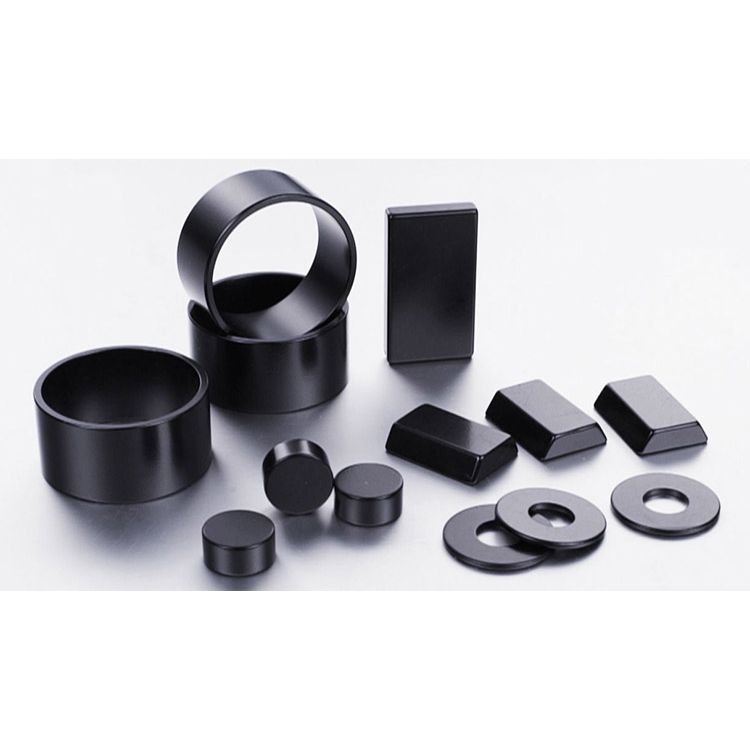Why Should You Choose Bonded Neodymium Magnet for Your Applications?
2025-08-19
When it comes to modern magnetic materials, Bonded Neodymium Magnet stands out as one of the most versatile, reliable, and performance-driven options available today. From automotive systems to consumer electronics, medical devices, and industrial equipment, this magnet delivers an ideal balance of strength, precision, and customization.
In my professional experience spanning two decades in the global SEO and manufacturing field, I have observed that customers often struggle to differentiate between traditional sintered magnets and bonded types. However, once they discover the advantages of bonded neodymium solutions, many never look back. In this article, I will explain the product's parameters, applications, effectiveness, and importance for industries, while also addressing some of the most common questions customers ask before choosing this type of magnet.
What Exactly Is a Bonded Neodymium Magnet?
A Bonded Neodymium Magnet is manufactured using a combination of neodymium-iron-boron (NdFeB) powder mixed with a polymer binder through either compression molding or injection molding. This process creates a magnet that is not only strong but also allows for complex shapes and high dimensional accuracy.
Unlike sintered neodymium magnets, which are known for their maximum magnetic performance but brittleness, bonded magnets offer greater flexibility in shape design, corrosion resistance, and mechanical properties.
Key Advantages of Bonded Neodymium Magnet
-
Design Flexibility – Complex and thin-walled geometries are achievable.
-
Corrosion Resistance – Natural polymer binder provides better surface protection compared to sintered types.
-
Isotropic Properties – Magnets can be magnetized in multiple directions, expanding application scope.
-
Lightweight Yet Strong – Ideal for compact electronic devices without compromising strength.
-
Cost-Effective – Reduced machining and secondary processing needs lower production costs.
Typical Applications
Bonded Neodymium Magnet has penetrated almost every sector where efficient magnetic solutions are required:
-
Automotive Industry: Used in sensors, actuators, and electric motors.
-
Medical Devices: Essential for precision instruments and diagnostic equipment.
-
Office Equipment: Found in printers, copiers, and data storage devices.
-
Consumer Electronics: Integral in speakers, headphones, and small electronic motors.
-
Industrial Automation: Robotics, magnetic couplings, and measuring instruments.
Technical Parameters of Bonded Neodymium Magnet
Below is a simplified technical specification table for quick reference.
| Parameter | Typical Range / Value | Notes |
|---|---|---|
| Magnetic Energy Product (BHmax) | 6 – 12 MGOe | Lower than sintered NdFeB but suitable for many designs |
| Intrinsic Coercivity (Hci) | 8 – 15 kOe | Stable against demagnetization |
| Density | 5.9 – 6.2 g/cm³ | Lighter compared to sintered magnets |
| Operating Temperature | -40°C to +150°C | Special grades available for higher resistance |
| Shapes & Sizes | Rings, blocks, discs, custom forms | Flexible design options via molding processes |
| Corrosion Resistance | Excellent (polymer protected) | No additional coating required in many cases |
Why Is It So Important in Modern Industries?
As industries shift towards miniaturization, efficiency, and sustainability, the importance of Bonded Neodymium Magnet becomes even more evident. For example, in electric vehicles and hybrid systems, the demand for smaller yet powerful magnetic components is rising rapidly.
When I consult with clients, I often highlight how these magnets help achieve:
-
Higher efficiency in smaller motors
-
Reduced system weight without compromising strength
-
Customization that speeds up R&D cycles
-
Durability that extends product lifespan
It is this combination of factors that makes bonded neodymium magnets indispensable for modern engineering challenges.
Frequently Asked Questions (FAQ) About Bonded Neodymium Magnet
1. What is the difference between a Bonded Neodymium Magnet and a Sintered Neodymium Magnet?
A Bonded Neodymium Magnet is made by mixing neodymium powder with a binder and forming it through molding, resulting in greater design flexibility and corrosion resistance. In contrast, sintered magnets are pressed and sintered at high temperatures, offering maximum magnetic strength but are brittle and less adaptable in complex shapes.
2. How durable is a Bonded Neodymium Magnet in real-world conditions?
These magnets are highly durable due to the protective polymer binder, which prevents corrosion and reduces brittleness. They maintain stable performance in environments ranging from -40°C up to 150°C. For industries like automotive and electronics, this durability ensures reliability and longer equipment life.
3. Can Bonded Neodymium Magnet be customized for unique applications?
Yes. One of the greatest strengths of Bonded Neodymium Magnet is its customization potential. Through injection or compression molding, manufacturers like Ningbo New-Mag magnetics Co., Ltd can produce magnets in specific sizes, shapes, and magnetic orientations to perfectly fit customer requirements.
Why Choose Our Bonded Neodymium Magnet?
At Ningbo New-Mag magnetics Co., Ltd, we specialize in the design and manufacturing of high-quality Bonded Neodymium Magnets. Our team ensures every product meets stringent international standards, while offering customers:
-
Tailor-Made Solutions for unique project requirements
-
Reliable Quality Control throughout the production cycle
-
Competitive Pricing with no compromise on performance
-
Global Delivery and strong after-sales support
Conclusion
The decision to use Bonded Neodymium Magnet is not only about choosing a magnetic material; it is about selecting a future-proof solution that supports innovation, efficiency, and cost-effectiveness. With their flexibility in design, strong resistance to corrosion, and reliable performance across industries, these magnets represent the perfect balance of technology and practicality.
If you are looking for a trusted supplier with extensive expertise, Ningbo New-Mag magnetics Co., Ltd is your ideal partner. Contact our team today to discuss your requirements and discover how our Bonded Neodymium Magnet solutions can drive your projects to success.



